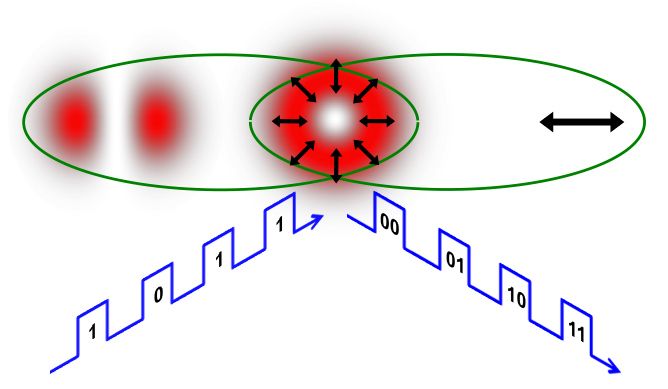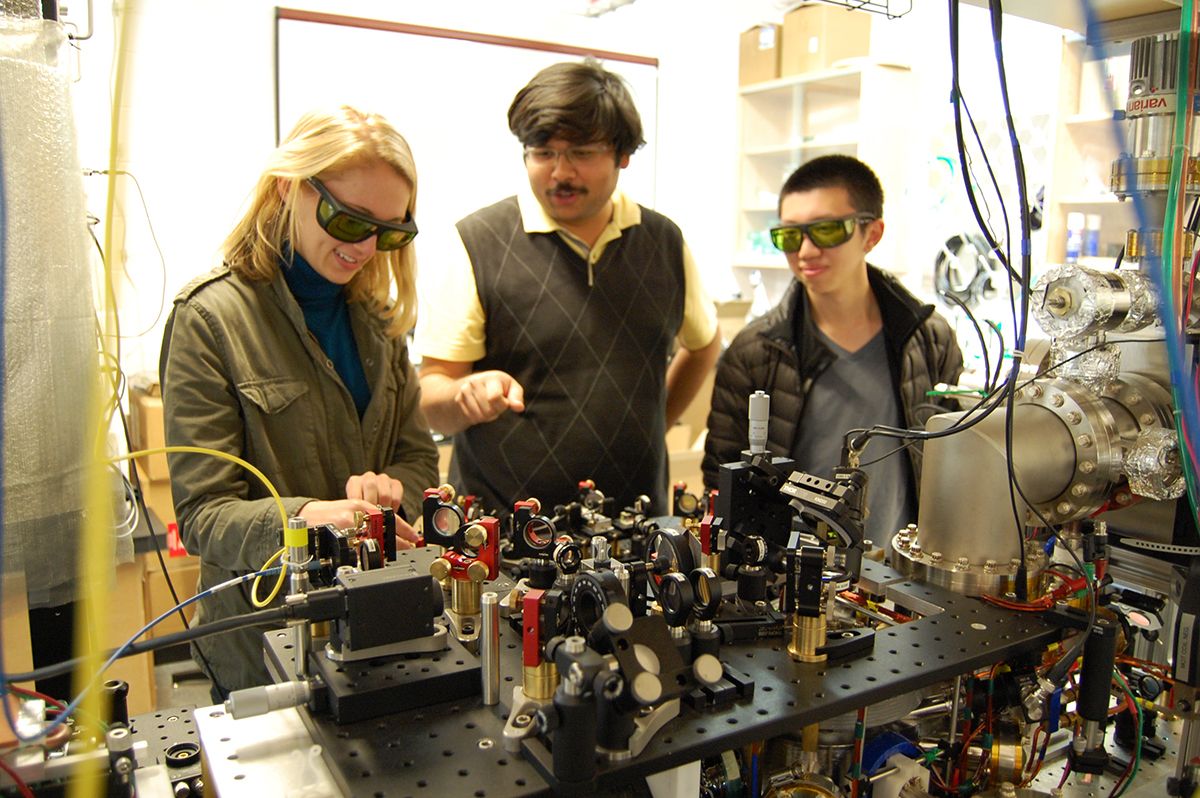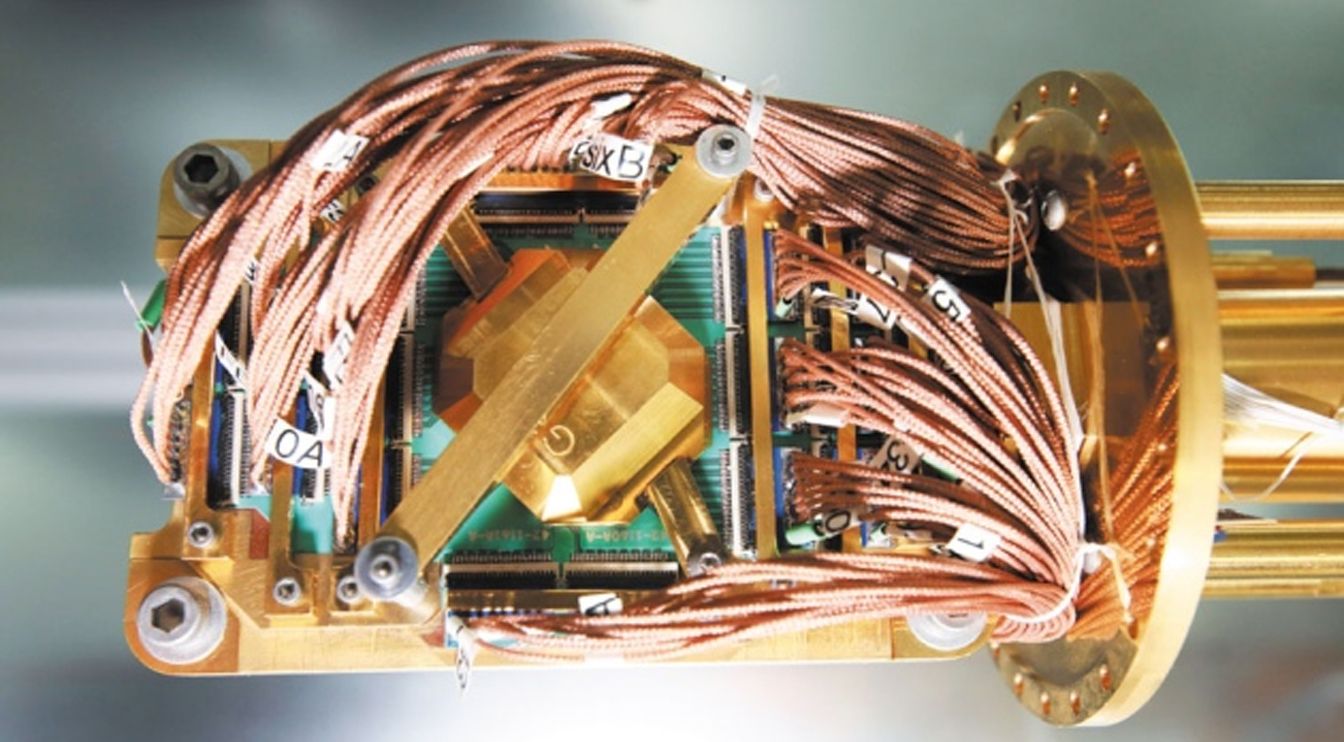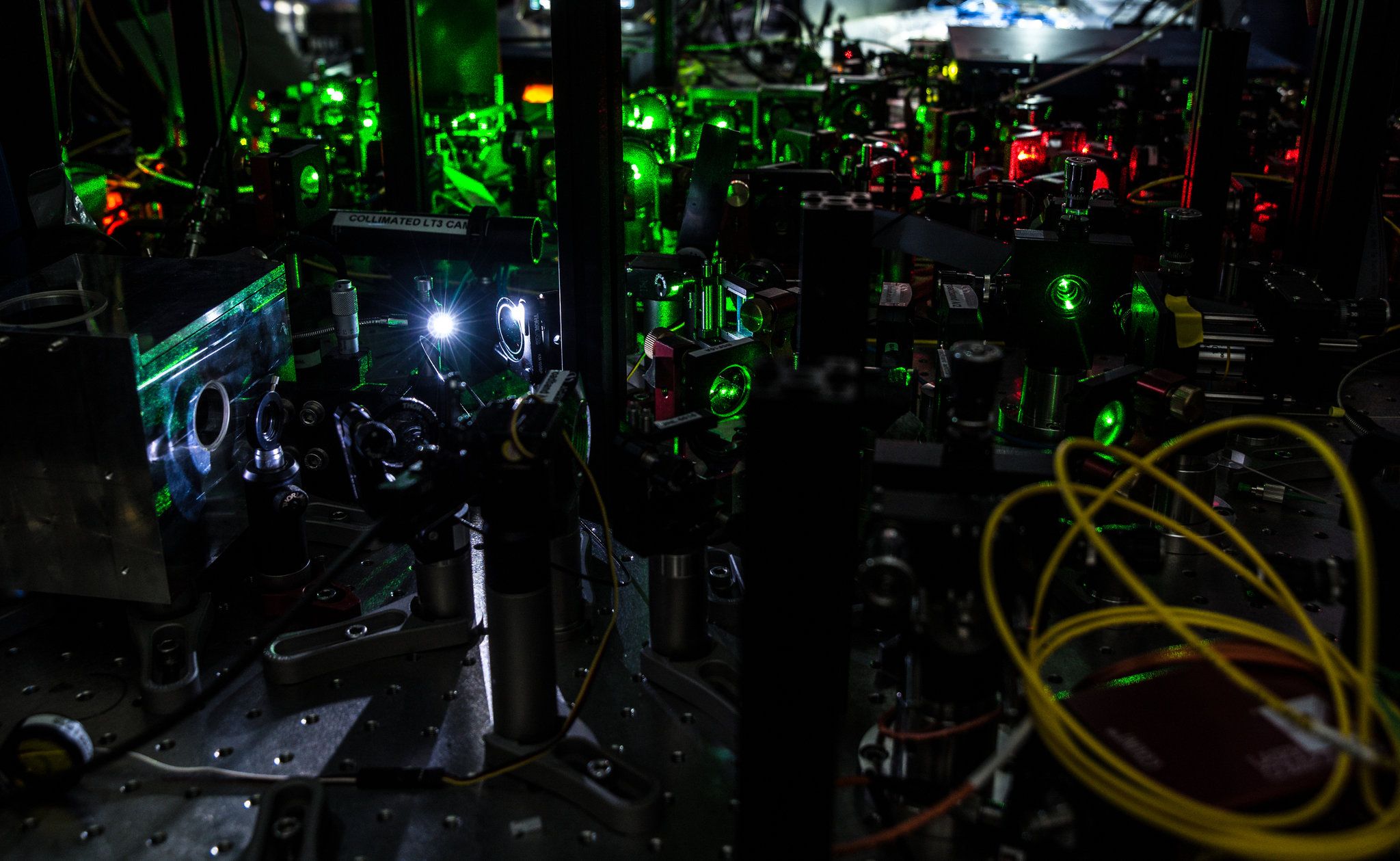In a classic eureka moment, a team of physicists led by The City College of New York and including Herriot-Watt University and Corning Incorporated is showing how beams from ordinary laser pointers mimic quantum entanglement with the potential of doubling the data speed of laser communication.
Quantum entanglement is a phrase more likely to be heard on popular sci-fi television shows such as “Fringe” and “Doctor Who.” Described by Albert Einstein as “spooky action at a distance,” when two quantum things are entangled, if one is ‘touched’ the other will ‘feel it,’ even if separated by a great distance.
“At the heart of quantum entanglement is ‘nonseparability’ — two entangled things are described by an unfactorizable equation,” said City College PhD student Giovanni Milione. “Interestingly, a conventional laser beam (a laser pointer)’s shape and polarization can also be nonseparable.”








